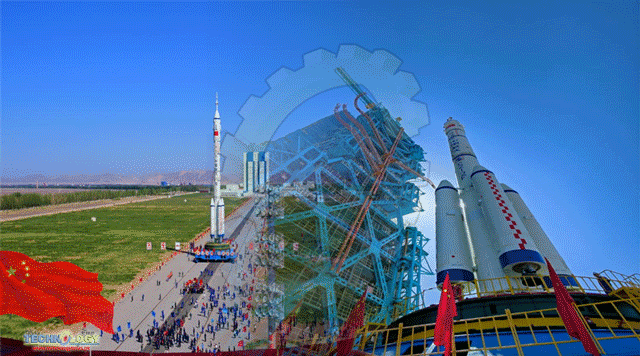China’s crewed spaceship Shenzhou-14, atop a Long March-2F carrier rocket, was vertically transferred to the launchpad at the Jiuquan Satellite Launch Center.

China’s crewed spaceship Shenzhou-14, atop a Long March-2F carrier rocket, was vertically transferred to the launchpad at the Jiuquan Satellite Launch Center in northwest China on Sunday, according to the China Manned Space Engineering Office (CMSEO).
The Shenzhou-14 crewed spacecraft will send three astronauts to the Tianhe core module of China’s space station in June for a six-month mission, said Huang Weifen, the chief designer of the astronaut system for China’s manned space project, at a press conference on April 17.
The combo of spaceship and rocket, which weighs 39 tonnes and has a total altitude of nearly 60 meters, was seen slowly leaving the final assembly test building and approaching the launch tower after traveling 1.5 kilometers on the seamless rail especially built to prevent vibrations. After about one and a half hours, the combination moved closer to the launch tower and the rotary platform slowly closed.
All the facilities and equipment at the launch center are in good condition now, and various prelaunch functional checks and joint tests will be carried out as scheduled, the CMSEO said.
Zhang Fusheng, chief designer for the manned spacecraft system, told China Media Group (CMG) that “we have completed all the final assembly and tests including the propellant filling of the spacecraft. We will conduct a large-scale system interface test on the rocket system, and then proceed to a whole system drill which marks the entry of the combo into the prelaunch status.”
China Space Station Mission 2022
A total of six space flight missions will be carried out in 2022 to complete the construction of China’s space station, forming a T-shaped complex in the coming October. After the launch of the Tianzhou-4 cargo spaceship in May and the launch of the Shenzhou-14 manned spacecraft in June, the Wentian lab module will dock with the Tianhe core module in July and the Mengtian lab module in October. The Tianzhou-5 cargo spacecraft and the Shenzhou-15 manned spacecraft will then follow, taking another three astronauts to stay in orbit for six months.
In addition, China also plans to launch its first large Chinese Space Station Telescope (CSST), or Xuntian, meaning “survey to heavens,” in 2023.
This news was originally published by CGTN.